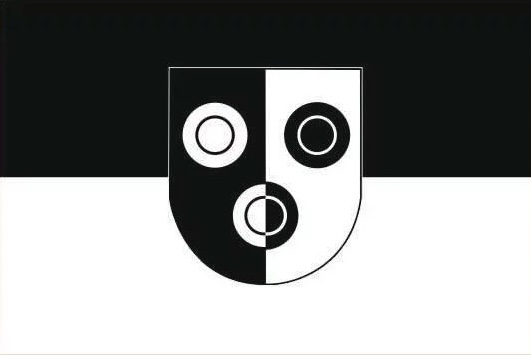 image located by Martin Karner
image located by Martin Karner(source)

Last modified: 2024-02-03 by martin karner
Keywords: scheibbs |
Links: FOTW homepage |
search |
disclaimer and copyright |
write us |
mirrors
 image located by Martin Karner
image located by Martin Karner
(source)
.jpg) image located by Martin Karner
image located by Martin Karner
(source)
The flag on this painted target (source, located by
António Martins) is a banner of arms (or armorial banner or heraldic banner) of the
city of Scheibbs (image by António Martins,
10 Jan 2024). The letters of the chronogram are LDIMICVLILI, in the right order MDCLLLVIIII (1759), which
is very probably the year when this target was
made. The inscription 1569 is the year when the shooters'
guild (Schützengmein) of Scheibbs was founded (the shooting tradition of Scheibbs is even older).
Scheibbs has one of the biggest museums of shooting targets in Europe (website).
It presents over 240 historic
targets, the oldest from 1680. The tradition of
painted targets has been continued until today.
Scheibbs got its coat of arms in 1537 from King Ferdinand I in honor of the defence of the citizens
against the Turkish attacks in 1529 and 1532. Because the
citizens were very skilled in the use of their
guns, the Turks weren't able to conquer Scheibbs. That was because of the duty for every citizen to get
educated in
the use of his rifle (See roof sculpture in Scheibbs with heraldic
devices crescent and star, remembering the successful defense against the Turkish attacks of
1529/32
[source]).
Obviously because of the city's name, Scheibbs' arms show three discs (Scheibe = disc). It's an
ironic coincidence that Scheibbs became famous for its shooting
tradition and target museum. The German
word Scheibe (disc) is also used in Zielscheibe (target, lit.: target disc) or
Schiessscheibe (target, lit.: shooting disc).
Today we know that the name Scheibbs doesn't come
from "discs", but from the Slavic Ščipéčje (wild dog rose) from the local Slavic Pannonian
population in
the 6th century. After the Slavic language faded away, it became Scibes around 1160,
Schibes around 1200, Schibsa in 1367, Scheybs in 1537, Scheibs in 1700
and
Scheibbs in 1800.
The flag shows the CoA centered on a background divided by black and white. The flag example shows the
discs with a second circle inside the disc, while the
CoA on the city's website
and on Wikimedia shows the
discs in plain white and black (the middle disc split by white and black).
Martin Karner, 16 January 2024